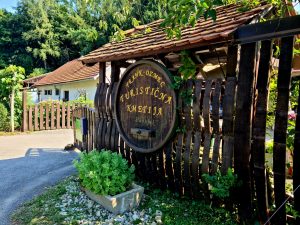One of the first things that struck me about Oslo was the amount of green in the city. There are parks everywhere. And those parks are full of people. Reading, chatting, strolling, running, walking dogs, playing ball. It took me back ever so briefly to my first glimpse of the Kalemegdan fortress in Belgrade.
Yet perhaps what is most striking about these parks is how many of them are cemeteries. The gravestones have a sense of orderly chaos about them. There are no straight lines, no landscape designs, no uniformity. And yet each one is pristine and well-tended oozing a sense of serenity that doesn’t just come from chirping birds and manicured lawns.
Trees grow from graves. Small bushes abound. Flowers are planted rather than vased or bottled. All are real.
We think of cemeteries in the abstract, as final resting places, yet for those of us who believe in an afterlife, in a chance to come back and have another stab at living a human life, that resting place is simply for our bones. The rest of us has travelled further.
I sat through the first series of New Tricks last week, glued to my laptop, fascinated by one character who sits and talks to his wife Mary who, it would appear, is buried his back yard, her simple marker surrounded by lights that set off the garden seat on which he sits, each night, with his whiskey, talking over his day. She died in a hit and run. He doesn’t know who was responsible. And dead though she might be, he still needs her to make sense of what’s going on in his head. He rants and raves at her, imploring her to help him out, to give him a sign that she’s listening.
I was reminded of the cemeteries I visited in Oslo. They, too, have their garden seats but unlike the Jewish cemetery here in Budapest, the plots are well tended. Every single one of them. Without exception. People haven’t forgotten. Perhaps it’s a municipal effort. Perhaps it’s not left to the families of those who have passed. Perhaps it’s a community effort. I don’t know. My Norwegian is worse than my Hungarian.
For me, how people treat their children, their aged, and their dead speaks volumes about their humanity. Oslo has impressed me on so many levels that perhaps I shouldn’t be as surprised as I am. But this degree of year-round care, from wherever it comes from, was like a breath of fresh air.
Share this:
- Click to share on X (Opens in new window) X
- Click to share on Facebook (Opens in new window) Facebook
- Click to share on Pinterest (Opens in new window) Pinterest
- Click to share on LinkedIn (Opens in new window) LinkedIn
- Click to share on Reddit (Opens in new window) Reddit
- Click to share on WhatsApp (Opens in new window) WhatsApp
- Click to share on Pocket (Opens in new window) Pocket
- Click to share on Telegram (Opens in new window) Telegram
- Click to email a link to a friend (Opens in new window) Email










2 responses
The graves would have been tended by the family, recent oil riches do not seem to have diminished the Norweigian sense of family, community and relationship with nature. There is much that the world could learn from the Scandinavians.
Ps how warm was the water?
Cold… nicely cold… couldn’t put a number on it but think Alaska at the height of summer